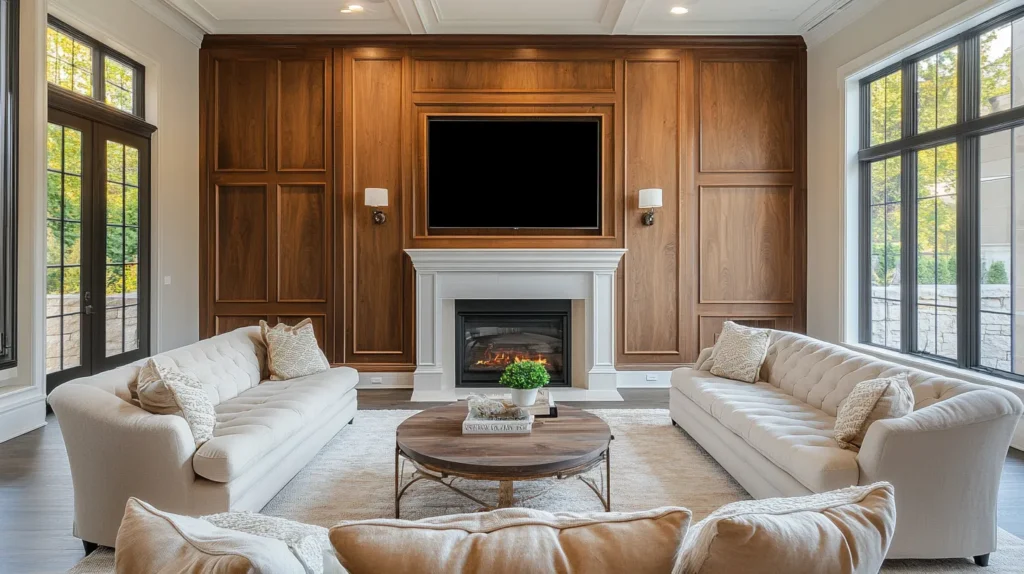Transform your living spaces with the timeless appeal of wall paneling. Whether you’re renovating a period home or adding character to a modern interior, wall paneling enhances both the style and functionality of any space. However, the key to successful installation lies in choosing the right location and panel type for your specific needs. From moisture-resistant options for bathrooms to luxurious wood panels for living areas, each space demands careful consideration. In this comprehensive guide, we’ll explore where wall paneling works best and share expert tips to help you maximize its impact in every room of your home.
Why Consider Wall Paneling for Your Home?
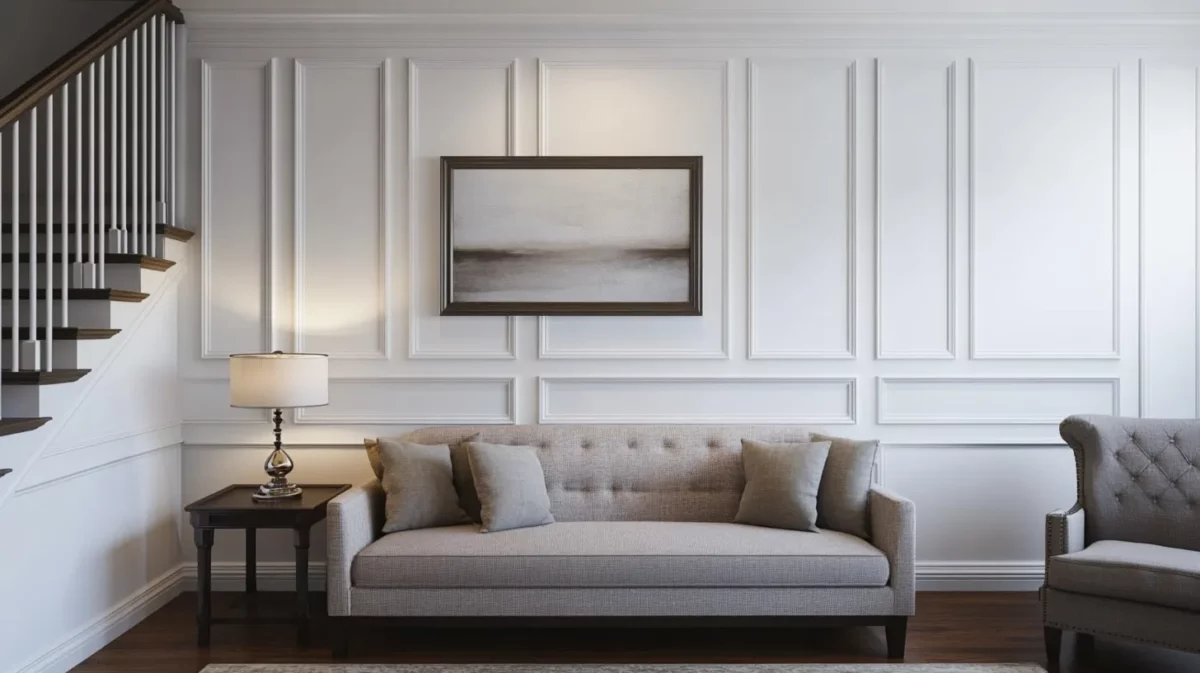
Wall paneling stands as a versatile design solution that does more than just beautify your space. Beyond adding sophisticated texture and visual depth, quality panels provide excellent insulation, reduce noise transmission, and protect your walls from daily wear. From classic wainscoting to contemporary 3D designs, paneling works seamlessly in various rooms while increasing your home’s value. However, selecting the right type and material for each space is crucial for achieving lasting, beautiful results.
Best Rooms for Wall Paneling and Why
While wall paneling can enhance any space, certain rooms offer unique opportunities for maximizing its impact. Understanding the best applications for each area helps ensure your investment adds both beauty and functionality. Let’s explore the most effective ways to incorporate paneling throughout your home.
Unbeatable Price 5-Star Rated Partner! 2200+ Shades! Top Quality Paint Free Cancellation!

Get a rental agreement with doorstep delivery

Find the BEST deals and get unbelievable DISCOUNTS directly from builders!
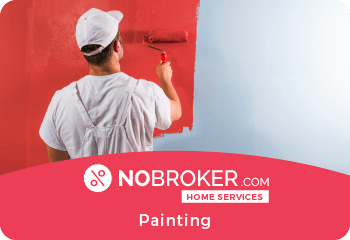
5-Star rated painters, premium paints and services at the BEST PRICES!
1. Should You Install Wall Paneling in the Living Room?

The living room serves as your home’s centerpiece, making it an ideal candidate for wall paneling. As a high-traffic area where style meets comfort, thoughtful panel selection can create a stunning focal point while maintaining practicality. Consider both aesthetic impact and durability when choosing your design.
- Best Paneling Types: Natural wood brings timeless elegance and warmth, while MDF offers cost-effective versatility. Modern 3D panels create dramatic contemporary statements perfect for feature walls.
- Why It Works: Living room paneling instantly elevates the space’s sophistication while providing subtle acoustic benefits and creating an inviting atmosphere that welcomes conversation.
- Design Tip: Create visual interest by installing paneling as a feature wall behind key furniture pieces, or opt for traditional half-wall designs that protect high-traffic areas.
2. Is Wall Paneling a Good Idea for Bedrooms?

Your bedroom should be a personal sanctuary, and wall paneling can help create that perfect retreat. Whether you’re aiming for cozy and traditional or sleek and modern, panels add architectural interest while enhancing comfort.
- Best Paneling Types: Soft fabric panels create luxurious texture and sound dampening, while wood adds natural warmth. PVC offers durability and easy maintenance.
- Why It Works: Bedroom paneling enhances the room’s comfort factor while providing additional insulation. Sound-dampening properties promote better sleep and privacy.
- Design Tip: Install floor-to-ceiling paneling behind your bed to create a dramatic headboard effect that doubles as sound insulation.
3. Can You Use Wall Paneling in the Dining Room?
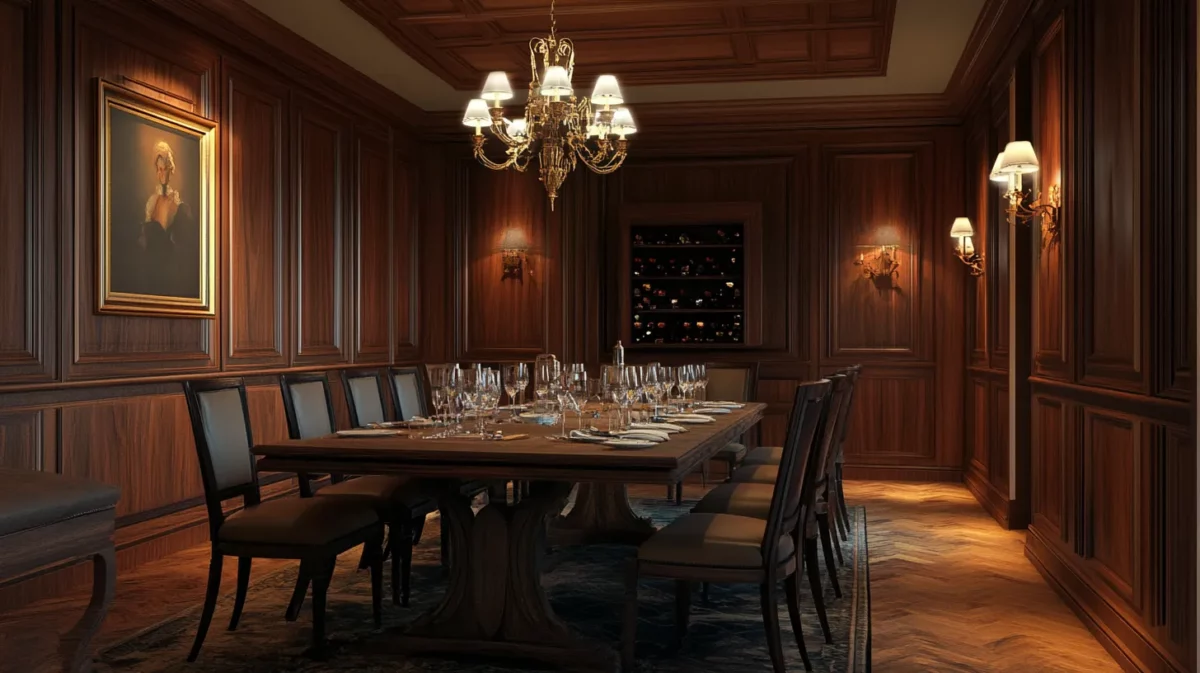
The dining room benefits from wall paneling’s ability to create an elevated atmosphere perfect for entertaining. This space bridges casual and formal dining experiences, making versatile paneling solutions particularly valuable.
- Best Paneling Types: Classic wainscoting provides timeless sophistication, while wood and MDF panels offer versatility in both traditional and modern designs.
- Why It Works: Dining room paneling establishes an elegant atmosphere while protecting walls from chair damage. It creates the perfect backdrop for memorable gatherings.
- Design Tip: Create drama by painting paneling in bold colors while keeping upper walls neutral, or use contrasting finishes to define your dining space.
4. What Are the Benefits of Wall Paneling in the Kitchen?

The kitchen presents unique challenges for wall paneling due to moisture, heat, and frequent cleaning needs. However, with proper material selection, paneling can provide both practical protection and aesthetic appeal in this busy space. Modern options offer excellent durability while maintaining style.
- Best Paneling Types: Moisture-resistant PVC provides maximum durability, while ceramic panels offer superior heat resistance. Waterproof MDF delivers cost-effective protection with style.
- Why It Works: Kitchen paneling creates a protective barrier against everyday cooking splashes, grease, and stains while adding architectural interest to functional spaces.
- Design Tip: Install water-resistant panels as a practical backsplash alternative or extend them behind countertops for seamless protection and style.
5. Should You Use Wall Paneling in Bathrooms?

Bathrooms require special consideration for wall paneling due to constant moisture exposure. Modern waterproof materials have revolutionized bathroom paneling options, allowing you to achieve both practical protection and luxurious aesthetics in wet spaces.
- Best Paneling Types: Waterproof PVC offers ultimate moisture resistance, while treated MDF provides an economical solution. Natural stone panels create spa-like luxury.
- Why It Works: Bathroom paneling creates an effective moisture barrier that prevents mold growth while elevating the space with sophisticated style and easy maintenance.
- Design Tip: Choose light-colored, water-resistant panels to brighten the space and create an airy, spa-inspired atmosphere that feels clean and refreshing.
6. How Can Wall Paneling Improve Home Offices?
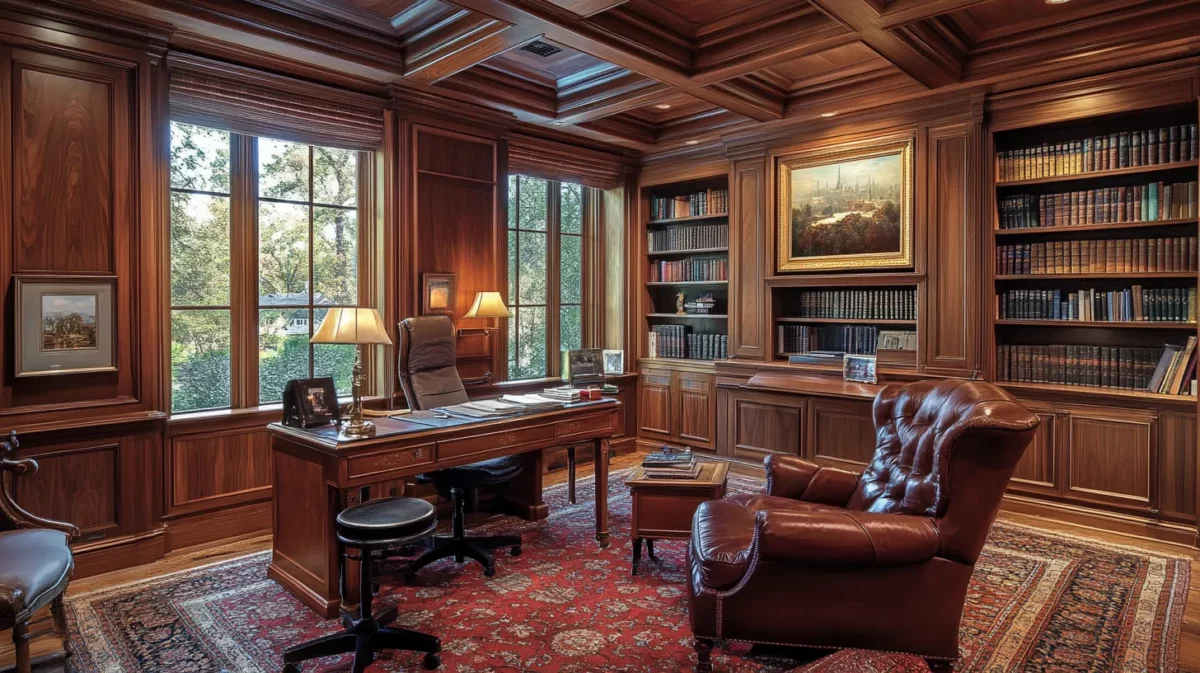
The home office demands a balance of professionalism and comfort, making it an excellent candidate for wall paneling. Strategic panel selection can enhance productivity by creating an inspiring workspace that manages acoustics and maintains focus.
- Best Paneling Types: Sound-absorbing acoustic panels minimize distractions, while wood and MDF options provide classic professionalism with design flexibility.
- Why It Works: Office paneling helps create a focused environment by reducing noise pollution while adding a sophisticated, professional atmosphere that enhances productivity.
- Design Tip: Install vertical panels to draw the eye upward, creating the illusion of higher ceilings and a more spacious work environment.
In Summary About Installing Wall Panelling
Wall paneling represents a versatile investment that can dramatically transform any room when chosen thoughtfully and installed correctly. Before beginning your paneling project, carefully assess each space’s specific requirements, from moisture resistance in bathrooms to sound absorption in home offices. Consider your lifestyle, maintenance preferences, and long-term durability needs when selecting materials and finishes. While some paneling projects might suit DIY enthusiasts, complex installations often benefit from professional expertise to ensure proper moisture barriers, level installation, and lasting results.
Frequently Asked Questions
Ans: The best materials vary by room. Wood and MDF work well in living rooms, while waterproof MDF and PVC are ideal for kitchens and bathrooms. Acoustic panels enhance home offices, and fabric panels add comfort in bedrooms.
Ans: Yes, but choose moisture-resistant materials like PVC, waterproof MDF, or ceramic panels. These prevent mold growth and withstand humidity. Proper sealing and ventilation further enhance durability, making wall paneling a stylish and functional option for wet areas.
Ans: Maintenance depends on the material. Wipe wood and MDF panels with a damp cloth, while PVC and waterproof panels can be cleaned with mild soap and water. Regular dusting and avoiding harsh chemicals help maintain the panel’s appearance.
Ans: Yes, wall paneling can improve insulation and reduce noise. Wood and MDF add warmth, while fabric and acoustic panels absorb sound, making them ideal for bedrooms and home offices. Properly installed panels can enhance both comfort and energy efficiency.
Ans: DIY installation is possible with lightweight panels like MDF and PVC, but intricate designs, large areas, or moisture-prone spaces may require professional expertise. Hiring a professional ensures precision, durability, and a seamless finish for long-lasting results.
Loved what you read? Share it with others!
NoBroker Painting Testimonials
Before this festive season
get your house painted
Source link

